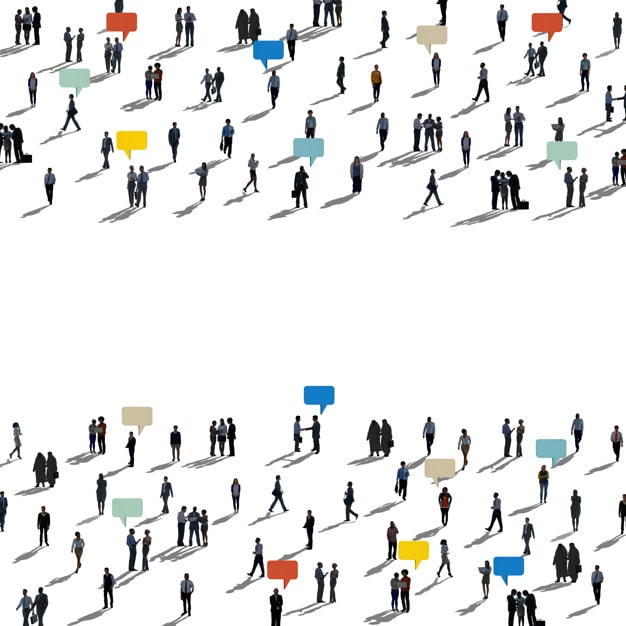Enabling Change in the Society via Legal Design (Part 2)
---
Legal designers can act as agents creating social value directly, targeting social innovation as -one of the results
(ICYMI: I have previously analysed the relationship between the legal service value chain, legal design and legal designers as agents to create social value in the Part 1.)
Regenerative Leadership and Legal Sector
This week I attended a wonderful webinar organized by Designit, hosted by Mads Kjoller Damkjaer where Laura Storm one of the co-authors of Regenerative Leadership was the speaker. The subject was Sustainability by Design: Regenerative Design Thinking. The topic was extremely interesting and one might wonder how I will tie this to legal design.
Regenerative leadership is described as “a new way of leading and redesigning organizations and communities that is urgently needed. A way that address the interconnected stress in our workforce, ecosystems and economy” on the website of Regenerative Leadership [1].
Regenerative leadership is based on three pillars: (i) regenerative design where the way we produce and consume is re-designed according the principles of nature, (ii) regenerative organisations equipped with leaders and workforce able to adapt, transform and “deeply grounded” in its values where they deliver values for all stakeholders and (iii) regenerative living that gives priority to the well-being and inner resilience of its leaders and employees. The fundamental principle is to create more value that the organisation consumes in a collective way [2].
When you think of the legal service relationships, the ideal system is clients to be happy, lawyers to be well paid, courthouses not to be buried with legal work and citizens to have an equal access to justice systems. However the reality is quite different. Especially during the pandemic, we see that clients are not happy with inefficient and overpriced work, lawyers discussing serious topics how menthal health and well-being is underrated, courthouses having many difficulties and citizens having troubles to access justice. The way the legal system works is heavily based on solving problems, preventing risks and usually confined in relations.
This webinar made me think if we can have a regenerative approach and a strong attitude “to create more value than we take” in legal industry, how we can make it?
Legal Design and Creating Social Value
The current system relies upon the power of attorney between a lawyer and his/her client. Therefore, it is the upmost priority to keep the client’s interest on top within legal limitations. However what if there is another way where you as a lawyer has a chance to still keep interest your client’s interest on top but also considering a way to also create value for the third party stakeholders? One of the best examples that I actually saw today on Linkedin was from Pamelo Cone where she mentioned about the Chancery Lane Project.
This is a project coming from “a focused and collaborative effort to lawyers from around the world to develop new contracts and model laws to help fight climate change” [3]. In scope of this project, participants to the Chancery Lane Project created a set of 21 clauses that can be used in contracts to support businesses and communities to fight climate change [4]. These clauses have already been downloaded more than 55.000 times across 73 counties according to the project’s media release. Quoting the phrase of one of my woman heroes, Karen Dark “Would it be amazing” [5] to have lawyers pro-actively coming up with suggestions that would add value to the legal services and create value for the society.
Thinking about other challenges we face in the society, legal design method can be used as a collaboration tool to bring together professionals coming from different backgrounds and seek out alternative ways to improve legal services in a way that also creates value for the society.
From another point of view, lawyers can also improve legal information or legal aspects of the any service in a proactive way by collaborating with non-legal professionals. A good example-not far from home- would be the Legal Design Turkey’s recent solution, which won a prize and a pilot support from UNDP Turkey Accelerator Lab in scope of the UNDP Social Innovation Support Program [6]. Our solution, which was selected as one of the top ten winners among 422 solutions, is based on trust building between citizens and local governments by re-designing legal information in public services. From my personal experience as the founder of Legal Design Turkey is that there is a lot of room of improvement in the area and would be also happy to share my insights here once again after we complete our pilot project.
 Source: Freepik
Source: Freepik
Legal Design and Social Innovation
According to the online e-book of Margaret Hagan, design is systematized in according to “the type of challenge the designer want to solve” [7]. The types are as follows: Information design, product design, service design, organisational design and system design. I am very fond of this structure and use it very often while ideating. It made me wonder, if we aim tackle a social challenge via legal design, how should we categorize it. If we are designing contracts clauses to fight climate change like the Chancery Lane Project does, would it be product design or systemic design since it aims to tackle a systemic problem or would it be both?
Social innovation is defined as “ the process of developing and deploying effective solutions to challenging and often systemic social and environmental issues In support of social progress” where “ solutions often require the active collaboration of constituents across governments, business and the non-profit world” [8] as per to Stanford University Centre for Social Innovation.
For social innovation, I will make an exception and will hold the subject out to the typology of design. However I will analyse this concept under another framework created by Prof. Amanda Perry-Kessaris from University of Kent. According to Prof. Perry-Kessaris’s paper on “Legal Design for Practice, Activism, Policy and Research” , she created a conceptual framework defining different implementation of legal design for practice, legal activism, policymaking and legal research. I also find this paper extremely interesting because these four areas can also be thought as four different ways legal professionals can tackle societal problems. In this regard, I believe when it comes to societal problems and finding ways to solve them in an innovative manner, a practicing lawyer can do it via activism by collaborating with NGOs, supporting policymaking efforts or through legal research. In this sense, legal design can be the common method to be used in these ways especially when collaborative collective action is needed.
In conclusion, I strongly believe legal designers can act as agents creating social value directly by either doing themselves or indirectly facilitating multi-disciplinary legal design workshops aiming social innovation as one of the outcomes. If we want to live sustainably and equally in the future, we need to design the world including the legal sector from today and we need to do it in a collaborative way.
- Regenarative Leadership, https://www.regenerativeleadership.co/
- Regenerators, https://www.regenerators.co/about
- The Chancery Lane Project, https://chancerylaneproject.org/
- The Chancery Lane Project Media Release, https://docs.google.com/document/d/1qSJzoduBUBxs2kteFFUmoZnuukdPP0Zd6sFiKlvIXhA/edit
- Karen Darke, http://www.karendarke.com/blog/
- UNDP, https://www.tr.undp.org/content/turkey/en/home/presscenter/pressreleases/2021/03/sosyal-inovasyon.html
- Margaret Hagan, https://www.lawbydesign.co/
- Sarah A.Solue, Neil Malhotra, Bernadette Clavier, https://www.gsb.stanford.edu/faculty-research/centers-initiatives/csi/defining-social-innovation
Related links
Main menu






